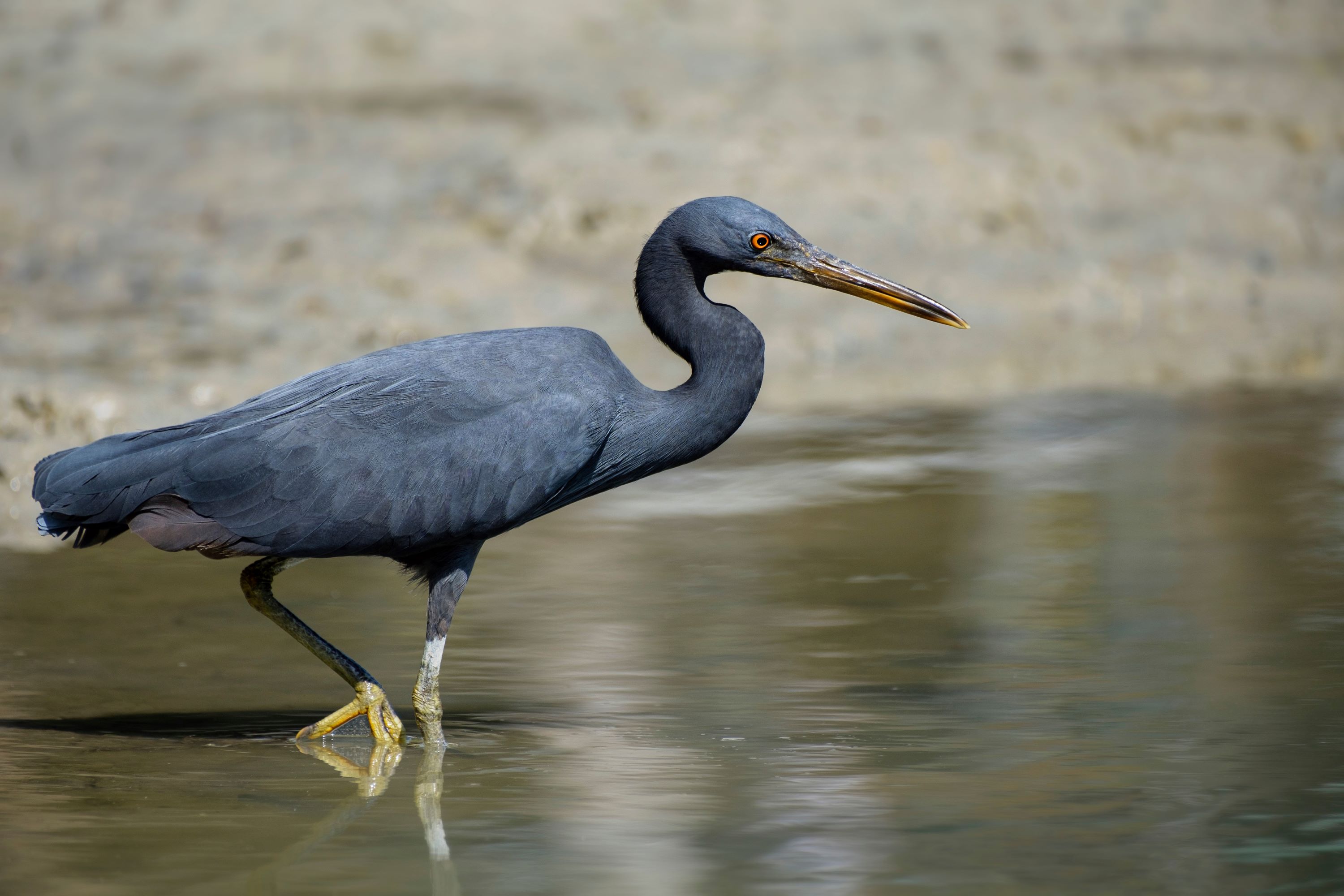
The Pacific Reef Heron: The Coastal Sentinel
Introduction to the Pacific Reef Heron
The Pacific Reef Heron, known scientifically as Egretta sacra, is a distinctive bird in the heron family, Ardeidae. This species, renowned for its adaptability to coastal environments, is a fascinating study in avian adaptation and survival.
Physical Description
Pacific Reef Herons are medium-sized birds, typically measuring about 60 cm in height. They exhibit two color morphs – one predominantly dark slate-gray and the other primarily white, making them unique in their appearance. Regardless of the morph, they have short, yellow legs and a robust, pointed bill that is ideal for foraging in coastal areas.
Habitat and Distribution
This heron is widely distributed across coastal regions of the Pacific, including parts of East Asia, Southeast Asia, Polynesia, and Australasia. It thrives in a variety of shoreline habitats, from rocky coasts and coral reefs to mangroves and tidal flats.
Behavior and Lifestyle
The Pacific Reef Heron is known for its solitary nature, especially when foraging along the shore. It is a patient hunter, often seen standing motionless, waiting to catch its prey. This bird is also known for its wariness, making it a challenge to observe at close quarters.
Feeding Habits
Its diet mainly comprises small fish, crustaceans, and mollusks. The Pacific Reef Heron uses a mix of hunting techniques, including standing still to ambush prey and actively chasing down food in shallow waters.
Breeding and Nesting Habits
These herons typically breed in small colonies, often on isolated islands or in secluded coastal areas. They build their nests in trees, shrubs, or even on rocky ledges, using twigs and branches to create a sturdy platform.
Egg Laying and Incubation
The female lays 2 to 3 pale blue-green eggs. Both parents share in the incubation duties, which lasts for about 24 to 26 days. The secluded nature of their nesting sites offers protection from many predators.
Chick Rearing and Parental Care
The chicks are altricial, relying on their parents for food and protection. Both parents feed the chicks, primarily with regurgitated fish. The young fledge the nest at about 5 to 6 weeks of age.
Vocalizations and Communication
Pacific Reef Herons are relatively quiet but can produce a variety of sounds for communication, especially during the breeding season. These include soft cooing and a harsher croaking sound when alarmed or disturbed.
Conservation Status
Currently, the Pacific Reef Heron is listed as Least Concern by the IUCN. However, like many coastal species, it faces challenges due to habitat degradation, pollution, and human disturbance in some areas of its range.
Similar Species and Taxonomy
Belonging to the order Pelecaniformes, the Pacific Reef Heron is closely related to other herons and egrets in the genus Egretta, such as the Little Egret and the Snowy Egret. However, its color morphs and preference for coastal habitats set it apart from these more widespread species.
The Pacific Reef Heron in Utah
The Pacific Reef Heron is not found in Utah or the mainland United States, as its habitat is restricted to coastal regions of the Pacific Ocean. In Utah, bird enthusiasts can observe other egret and heron species in local wetlands and waterways.
Conclusion
The Pacific Reef Heron, Egretta sacra, exemplifies the diversity and adaptability of the heron family. Its ability to thrive in various coastal environments highlights the ecological importance of preserving marine and shoreline habitats. Studying and protecting the Pacific Reef Heron contributes to our broader understanding of the ecological dynamics of coastal regions and the need for their conservation.